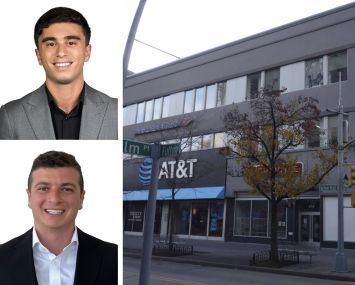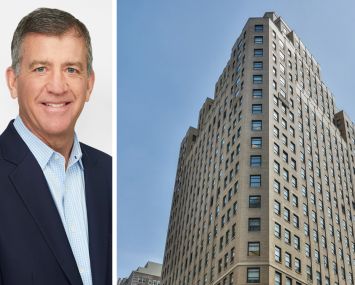Mixed-Use Conversion Is Not the Answer for Office Owners
At least not in any sort of numbers that would pay off
By David M. Levitt July 9, 2024 7:05 am
reprints
If only cost weren’t a factor, maybe mixed-use would be the best solution for America’s acres of unused office space.
Take a look at what is now called the Deutsche Bank Center, nee the Time Warner Center. Where would the soaring two-tower edifice at Columbus Circle be without the Whole Foods supermarket anchoring its retail? The complex mixes offices, a high-end Mandarin Oriental hotel, upper-crust condominiums that prefigured Billionaires’ Row on nearby 57th Street, a Jazz at Lincoln Center performance venue, and clothiers such as Hugo Boss, J.Crew, Lululemon and H&M.
Or take Hudson Yards. Just the eastern portion, built over a train yard, contains some of New York City’s biggest office skyscrapers, a retail concourse at one time anchored by the city’s first Neiman Marcus, and some high-rise condos, with the western portion, supposedly apartment-tower dominated, still to come.
Then there’s Essex Crossing. The 1.9 million-square-foot development in Manhattan’s Lower East Side is a whole bunch of things. It has at least 83 market-rate apartments, some 350,000 square feet of offices, an array of stores including a Trader Joe’s to strike envy in the hearts of suburban fortress malls, a food hall, a fitness studio, a bowling alley, a multiplex movie theater, a rooftop terrace, a museum for the International Center of Photography, and even a climbing gym.
“I spent my Father’s Day with my son at Essex Crossing,” said Steven Binswanger, JLL’s senior managing director for capital markets. (His son’s 3, and he took him to Essex Crossing to see the Disney-Pixar film “Inside Out 2.”) “That’s an incredible development. [But] mixed-use development offers some unique positives and some unique challenges.”
One of those challenges is the cost.
“Mixed-use development is inherently more expensive to build, operate and maintain over the long term,” said Katie Bucklew, a vice president for mixed-use at AvalonBay Communities, an Arlington, Va.-based real estate investment trust and one of the largest apartment owners and builders in the country. She was also on the Urban Land Institute’s urban development/mixed-use council when she made those remarks late last year.
“Exact numbers are difficult to quantify given many different factors,” she said in an email to Commercial Observer. “Some of the cost drivers can include additional structural considerations, complicated legal and financing agreements, additional parking requirements and increased back-of-house facilities (loading, trash, access corridors, etc.). The coordination and communication on a mixed-use community is of critical importance as well, requiring more management and oversight to ensure all pieces work together.”
Calculating the additional cost of mixed-use is hard because it “is poorly defined in general, and thus nearly impossible to track,” said a source at another major real estate company.
Another mitigating factor, which is stifling development of all kinds, is high interest rates. That hasn’t stopped some from at least thinking about mixing asset types as an alternative to putting up, say, an office skyscraper in place of an older office building — or converting that office building into residential.
“Combining two or more asset classes in one building … has grown more popular in recent years and could play a pivotal role in commercial real estate’s future,” wrote researchers from J.P. Morgan Chase in a report last year.
In December, Essex Crossing office anchor tenant Verizon decided not to occupy, and to instead sublease, its 143,000 square feet at the complex. What remains unclear is whether any of those offices would be converted to apartments or some other use more saleable than office, which has suffered due to the work-from-home and remote-work trends. (Attempts to obtain comment from the partnership that controls Essex Crossing — Taconic Investment Partners, L+M Development and the Goldman Sachs Urban Investment Group — proved unsuccessful.)
According to data from JLL, some 43 million square feet of offices have been delivered in Manhattan over the last five years. But the next five years will be a different story. The pipeline of new supply in Manhattan over that period is expected to be less than one-third the size of the preceding five.
There’s just about no question that interest in building new office buildings is way down.
“Office construction activity started slowing down immediately in 2020 with the onset of pandemic and is approaching a record low,” said Phil Mobley, national director for office analytics at CoStar Group, in an email. “The office pipeline is only going to continue to shrink, as there has been a record-low volume of projects started in each of the last three quarters,” including this year’s second quarter.
Transaction dollar volume for the New York metro area is way off, an indication of investor interest (or lack thereof), according to JLL. In 2019, the last year before the pandemic, $54.3 billion changed hands, roughly a third of that in deals involving office towers. In 2020, that crashed to $32.3 billion, before recovering to $52.7 billion and $52.8 billion in 2021 and 2022, respectively. It fell again to $31.5 billion in 2023, with the office portion about one-fifth of that. It was $5.6 billion in the first quarter of this year.
Even industrial and multifamily construction have tailed off drastically in response to spiking interest rates, Mobley said
Northspyre, a cloud-based software company for developers, said it saw a 9 percent decline in developers actively building or considering mixed-use projects from a baseline shortly after the worst point of the pandemic — to June 2024, based on 13,088 interviews with 6,925 developers.
“That was sort of surprising,” said William Sankey, co-founder and CEO of Northspyre. “We definitely see multifamily down over 11 percent this year. There was such a boom.”
Roughly 85 percent of Northspyre’s customers developing mixed-use today have traditional residential buildings over retail. Likely the decline in multifamily from a peak a couple of years ago is also dragging down mixed-use pipelines, Sankey said.
Sankey said he is seeing office developers placing additional emphasis on high-end retail, food, hotels, social clubs, outdoor terraces and other amenities “to create this synergy around different uses that might benefit office, whereas in the past office might have been a killer use standing alone.’’
While nationally there is a decline in mixed-use development, “in New York it’s a little bit different” with developers building or planning such deals doubling from 2020, he said. “In the New York market, it’s very much alive.”
By his numbers, office was down 17 percent nationally, he said.
Conversion is something that’s not under consideration for 28-40 West 23rd Street in Manhattan’s Flatiron District, said Michael Cohen, a principal at Williams Equities, a real estate firm that controls the 578,000-square-foot former Ladies Mile department store, now being repositioned for highly amenitized offices and retail.
“We don’t have a boutique building, it’s not set up for that,” said Cohen of the building. “The floors are over an acre and a half.”
Instead, he said, the building will have a large rooftop terrace, some it for all tenants to share as well as private space for individual tenants. “Things that were once considered ‘nice to have’ are now more closely ‘need to have,’ ” Cohen said.
JLL’s Binswanger called the commercial real estate in Midtown South, of which Flatiron is a part, “a huge opportunity.”
The best-located ground-up developments have little to worry about, said Binswanger. New developments in Hudson Yards and the Penn District have seen a significantly different tenant demand story than the overall market. Moreover, the area near Grand Central has seen tenants like J.P. Morgan and Citadel catalyze new developments that will ultimately be the nicest buildings in all of the city. “The flight to quality is undeniable,” said Binswanger.
“[They] have all shown robust demand from the tenant side,” he added. “We’re in a weird period right now where there has been some pullback.”



